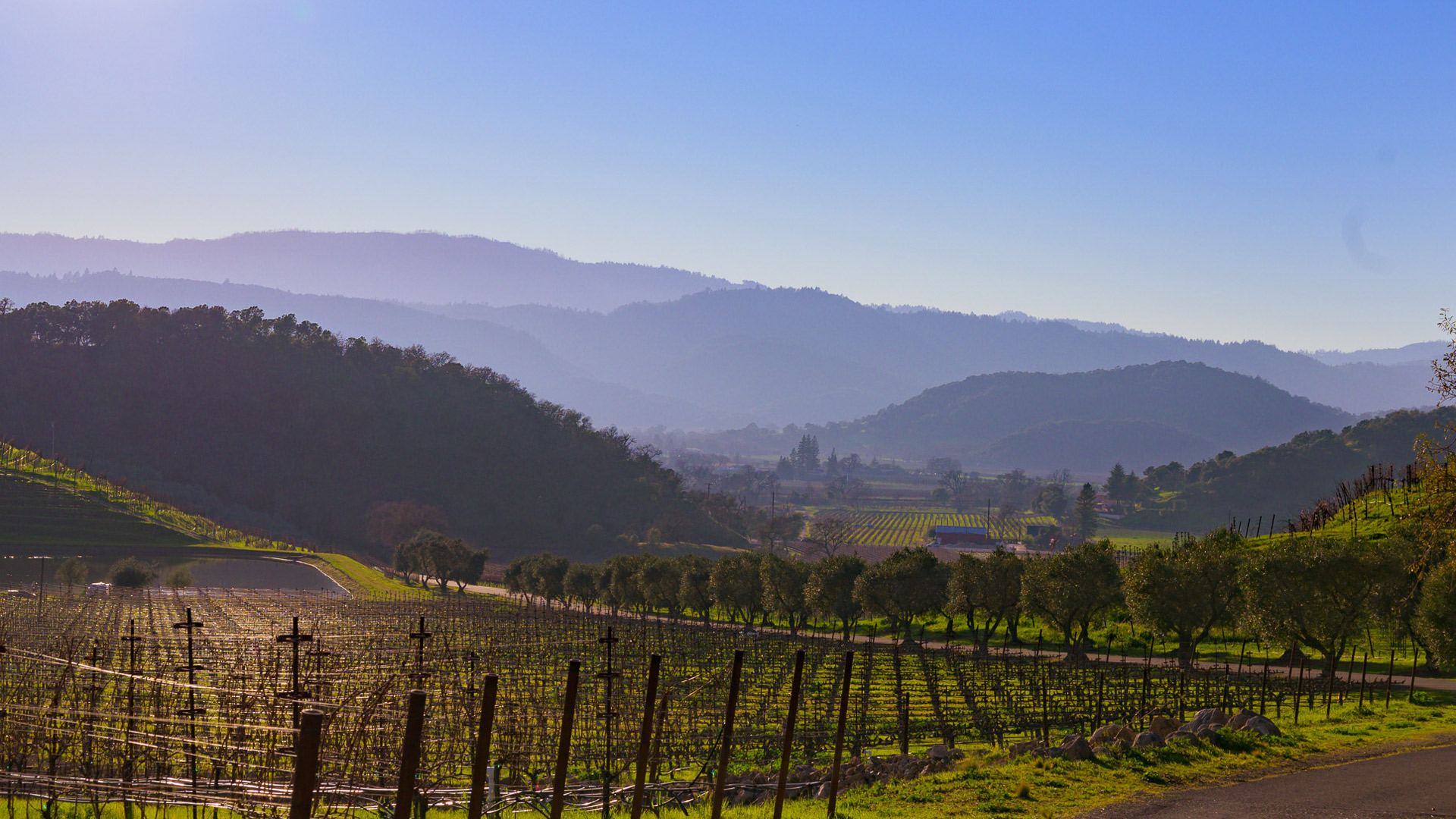Nose
Dark berry, cherry, and dried herb
aromas on the nose.
Palate
The palate is massively structured, with rich blackberry and cherry flavors
counterbalanced by exotic fruit and spice notes. Despite the structure, the finish is lush, with
rich fruit flavors lingering.
Growing Conditions
Our Donum Anderson Valley wines come from the Angel Camp vineyard in the “deep
end” of the Anderson Valley, north of Philo, where ocean fog keeps temperatures cool
much of the summer. Pinot Noir planted in these volcanic, sandy soils at about 500 feet
above sea level shows great depth and complexity, with the different aspects lending
each block its own unique micro-climate. The Anderson Valley bottling represents a
barrel-selected blend from all of these blocks.
Harvest
The 2014 Vintage marked the third year of drought in California as a whole, although in the North Bay
we were fortunate to receive heavy storms in February and March which replenished the soils and ponds.
The season started early and stayed that way, with mild weather in the spring and warm (but not overly
hot) weather through the summer save for a few heat spikes early in June and July which were far
enough from harvest to cause few worries. A late heat spike in early October provided energy for the
last few blocks, and harvest wrapped up shortly thereafter.
The wines are softer than in 2013, and more accessible in their youth. The vintage evoked some
comparisons to 2004, another early year without too many overly hot days. The vintage’s evenness led
to wines that are well balanced with good acidity, so despite showing well young they should also age
well, as we have seen with the 2004s.
Bottling
The final blend assembled in January, 2016.
Winemaking
As with most vineyards in 2014, our Anderson Valley fruit came in earlier than usual, right around the
middle of September. The fruit was separated out into three different fermenters, which allows us to
match ripeness and style levels, while at the same time having fermentations of a good size that will
generate the heat and vigorous fermentation necessary to fully extract flavors and tannins from the skins.
During fermentation the caps were punched down up to four times per day, and the must spent from 3
to 5 weeks on the skins.
Aging
The wine was then barreled down into a mix of new and once-used French oak,
where it underwent secondary fermentation. The wine was then aged on the lees through all of 2015.
Appearance
The 2014 Anderson Valley is deep ruby in color.







